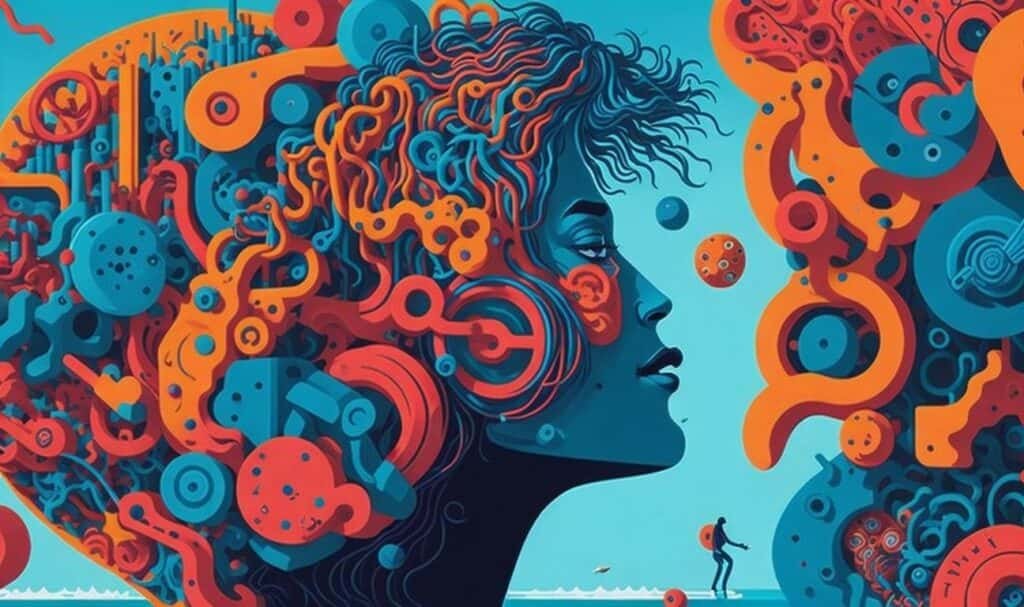Introduction and Inventor of ChatGPT
In recent years, we’ve witnessed an unprecedented surge in the capabilities of Artificial Intelligence, and at the forefront of this revolution are language models. The rapid advancement of language models has revolutionized the way we interact with technology. These sophisticated systems have the ability to comprehend and generate human-like text, opening up a myriad of possibilities for applications such as virtual assistants, content generation, and customer support.
One notable language model that has captured considerable attention is ChatGPT, developed by OpenAI. In this article, we will deep-dive into the captivating world of language model optimization and explore how ChatGPT has made a significant impact in the field. ChatGPT is not just another AI model; it represents a significant leap forward in conversational AI. With its ability to engage in natural, context-aware conversations, ChatGPT is reshaping how we communicate with machines.
Evolution of Language Models
Early Language Models: From ELIZA to ALICE
To understand the significance of ChatGPT, we must first trace the evolution of language models. The early days of language models can be traced back to programs like ELIZA, a rudimentary chatbot developed in the 1960s, and continued with ALICE in the 1990s.
These early language models laid the foundation for natural language processing but were far from the human-like conversational agents we have today. These early systems utilized pattern-matching techniques to simulate human-like conversations, even though their understanding was limited and responses were often scripted.
The Breakthrough of Transformer-Based Models
A monumental breakthrough in language models came with the introduction of
transformer-based models. Transformers, like BERT and GPT, brought a novel architecture that excelled at capturing contextual relationships in language. ChatGPT, a sibling of the GPT-3 model, takes this architecture to new heights, enabling richer, more dynamic conversations.
ChatGPT working Models, such as GPT (Generative Pre-trained Transformer), demonstrated remarkably improved performance by leveraging attention mechanisms and the ability to handle large amounts of training data.
ChatGPT: Powering Conversational AI
Understanding OpenAI’s ChatGPT
ChatGPT prompt Algorithm model is a product of OpenAI’s relentless pursuit of creating an AI system that can understand and generate human-like text. OpenAI’s ChatGPT is a versatile language model designed specifically for generating human-like conversational responses.
ChatGPT prompt Algorithm model has been trained on vast amounts of Internet text to develop a comprehensive understanding of various topics. Built upon the GPT (Generative Pretrained Transformer) architecture, ChatGPT prompt Algorithm model is designed to be a versatile conversational AI that can be adapted for various applications, from chatbots to virtual assistants.
Capabilities and Limitations of ChatGPT
While the ChatGPT prompt Algorithm model is an impressive model as with any other technology, ChatGPT comes with its own set of capabilities and limitations. While it can generate contextually quite relevant responses, it may sometimes produce incorrect or nonsensical answers.
ChatGPT optimization language tends to be overly verbose and lacks the ability to ask clarifying questions when faced with ambiguous queries. Understanding these strengths and weaknesses is crucial for harnessing ChatGPT’s true potential effectively.
The Magic Behind Language Model Optimization
Introduction to Language Model Optimization
The abilities of the ChatGPT working Model lie in a process known as language model optimization. This process takes a generic language model and tailors it to specific tasks and contexts, making it more proficient in generating relevant responses. Understanding this optimization journey is key for unleashing ChatGPT’s potential.
The Role of Pre-Training and Fine-Tuning
Language model optimization is a complex process that typically involves two main phases:
- Pre-training
In the pre-training phase, a model is exposed to a vast corpus of text, learning grammar, facts, and reasoning abilities.
- Fine-tuning
This phase narrows the focus and customizes the model for specific tasks or domains. It involves fine-tuning the model to enhance its performance and capabilities. It aims to refine the language model’s ability to generate coherent and contextually appropriate responses.
Challenges in Optimizing Language Models
Pre-training and fine-tuning are vital steps in optimizing language models. However, optimization of language models like ChatGPT is not without its challenges. It requires vast computational resources, a diverse dataset, and careful tuning to balance the model’s performance and safety.
Despite the promising results of language model optimization, there are several challenges involved. These include addressing biases in training data, mitigating issues related to model behavior, and ensuring the model aligns with ethical guidelines. Ethical considerations are given a very high priority, as the misuse of AI-powered language models can have serious consequences.
Fine-Tuning: Nurturing the Language Model
The Process of Fine-Tuning ChatGPT
Fine-tuning is the phase where ChatGPT is sharpened to perfection. Fine-tuning of ChatGPT is an intricate process that involves exposing the model to a labeled dataset, specifically tailored to the desired task or domain.
The fine-tuning process enables ChatGPT to specialize and adapt its responses to the given context. It allows ChatGPT to specialize in areas such as customer support, content creation, or even medical diagnosis.
Choosing the Right Dataset for Fine-Tuning
Choosing the right dataset for fine-tuning is crucial. It should be diverse, representative, and aligned with the target application to ensure optimal performance.
The success of fine-tuning largely depends on the quality and relevance of the dataset used. Data scientists must select datasets that depict real-world scenarios to ensure that ChatGPT provides accurate and contextually appropriate responses.
Techniques for Improving Model Performance
Fine-tuning isn’t just about feeding data to the model, it also employs several techniques to further enhance the performance of the language model. These include data augmentation, active learning, and hyperparameter tuning. Fine-tuning also includes reinforcement learning from human feedback (RLHF), which helps the model to learn from user interactions and improve over time.
Unveiling the Secrets: Model Architecture
In-depth Look into ChatGPT’s Architecture
Delving into ChatGPT’s architecture provides us with a deeper understanding of how it generates and processes text. It consists of a stack of transformer layers, which enable it to efficiently capture dependencies across different parts of the text.
ChatGPT, like its predecessors, relies on a transformer-based neural network. This architecture enables the model to process and generate text in a hierarchical and context-aware manner. Understanding the components of this architecture is crucial for appreciating how ChatGPT does its magic.
Key Components and Their Contribution
Within ChatGPT’s architecture, key components such as self-attention mechanisms, multi-head attention, and positional encoding play pivotal roles in understanding and generating text. These components work together to capture dependencies between words, maintain context, and generate coherent responses.
Understanding the details of these components sheds light on the model’s inner workings. Self-attention allows the model to analyze the importance of each word in relation to the others, while feed-forward layers help transform and refine the information.
Optimizing for Performance and Safety
Enhancing Language Model Safety
With great power comes great responsibility, and the immense language-generation abilities of ChatGPT are no exception. Ensuring the safety of the model in real-world applications is paramount. Techniques such as prompt engineering, context windowing, and reinforcement learning from human feedback (RLHF) are used to reduce the chances of generating harmful or biased content.
Balancing Model Limitations and Capabilities
Language models like ChatGPT are not infallible. Sometimes it can produce plausible-sounding but incorrect or biased information. Balancing the limitations and capabilities of language models is vital for optimal performance and is an ongoing challenge for AI developers. Striking the right balance ensures that the model generates appropriate and useful responses while avoiding the propagation of harmful or biased information.
Ethical Considerations in Language Model Optimization
Ethical considerations are an integral part of language model optimization. Addressing potential biases, ensuring fairness, and incorporating diverse perspectives are essential steps in building responsible and accountable language models.
Adapting to Real-World Usage
Scaling ChatGPT for Production
The transition from research to real-world usage requires scaling ChatGPT to meet the demands of users. This involves the optimization of efficiency and deployment of the model in production environments. OpenAI’s efforts in this direction have led to the availability of ChatGPT in various applications, from chat platforms to content-generation tools.
Addressing Biases and Ensuring Fairness
Addressing biases in language models is crucial for ensuring fairness and inclusivity. OpenAI has made efforts to address biases in ChatGPT, but ongoing work is necessary to improve upon this aspect.
Customization and Personalization of Language Models
To make ChatGPT even more useful, customization and personalization options are being explored. Customization and personalization of language models offer opportunities for users to shape their behavior and responses according to their individual preferences, further enhancing the user experience.
Enhancements in Multimodal Conversational AI
Merging Text with Other Modalities
The future of conversational AI is multimodal, where text-based interactions are seamlessly integrated with other sensory inputs like images, videos, and audio. This integration of text with other modalities opens up new avenues for multimodal conversational AI. This allows language models to process and generate responses based on a combination of textual and visual information.
Incorporating Images, Videos, and Audio
The ability of ChatGPT to process and generate text based on visual and auditory inputs is a game-changer. It means that a conversation with ChatGPT can include showing images or videos, describing scenes, or even generating voice responses.
This multimodal versatility is transforming the way AI can be used across industries, from healthcare to entertainment. But, incorporating images, videos, and audio into language models requires further advancements in deep learning techniques, such as vision and audio encoders, to effectively extract and utilize multimodal information.
Applications of Optimized Language Models
Chatbots and Virtual Assistants
One of the most prominent applications of optimized language models like ChatGPT is chatbots and virtual assistants. Chatbots and virtual assistants have become prevalent applications of language models. Optimized language models, like ChatGPT, enable these systems to provide more accurate and natural-sounding responses, enhancing user interactions.
Improving Customer Support Experiences
Improving customer support experiences is another area where optimized language models can make a significant impact. By generating helpful and informative responses, language models can assist in resolving user queries and providing timely assistance.
Revolutionizing Content Generation
Language models have revolutionized content generation by assisting in tasks such as writing articles, generating creative content, and even aiding in code completion for developers.
Evaluating and Benchmarking Language Models
Objectively Assessing Language Model Quality
Objectively assessing the quality of language models is essential to measure their performance accurately. Evaluating factors such as fluency, coherence, and relevance are crucial for benchmarking language models effectively
Popular Benchmarks and Evaluation Metrics
Popular benchmarks and evaluation metrics, such as BLEU,
ROUGE, and perplexity, provide standardized ways to compare and assess language model capabilities, allowing researchers and developers to make informed decisions.
The Future of Language Model Optimization
Advancements in Language Model Architectures
Advancements in language model architectures will continue to push the boundaries of what is possible. Techniques such as sparse attention mechanisms and improved training methodologies hold the potential for even more efficient and powerful models.
Potential Societal Impacts and Concerns
As language models become more pervasive, potential societal impacts and concerns arise. Addressing issues such as misinformation, user manipulation, and the perpetuation of biases will require ongoing research, collaboration, and ethical considerations.
Conclusion
The optimization of language models, with ChatGPT as a prime example, has unlocked exciting possibilities in the field of natural language processing. By fine-tuning, enhancing performance, and addressing safety concerns, language models have evolved to provide more accurate and contextually appropriate responses.
Looking ahead, the potential for advancements in language model optimization is immense. As researchers and developers continue to enhance models like ChatGPT language optimization, the future holds promise for even more refined, versatile, and responsible language AI systems.
FAQs
What is the ChatGPT optimization language?
ChatGPT is optimized using pre-training and fine-tuning techniques, which adapt the language model to specific tasks and domains.
What is ChatGPT used for?
ChatGPT is primarily used for generating conversational responses, powering applications like chatbots, virtual assistants, content generation, and more, where natural language understanding and generation are required.
What is the reinforcement learning technique used in ChatGPT called?
The reinforcement learning technique used in ChatGPT is called Reinforcement Learning from Human Feedback (RLHF).
What is the language model of ChatGPT?
ChatGPT utilizes a transformer-based language model architecture called GPT (Generative Pretrained Transformer), which enables it to understand and generate human-like text.
What is Reinforcement Learning from Human Feedback (RLHF)?
Reinforcement Learning from Human Feedback (RLHF) is a technique used to train ChatGPT by providing it with human feedback and optimizing its responses based on the feedback received.



















